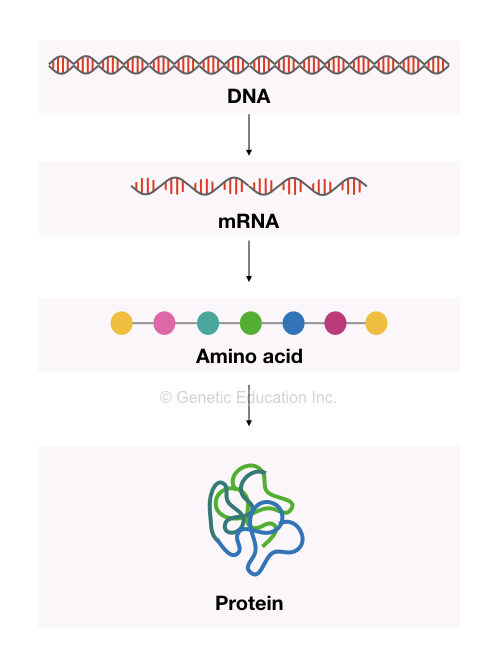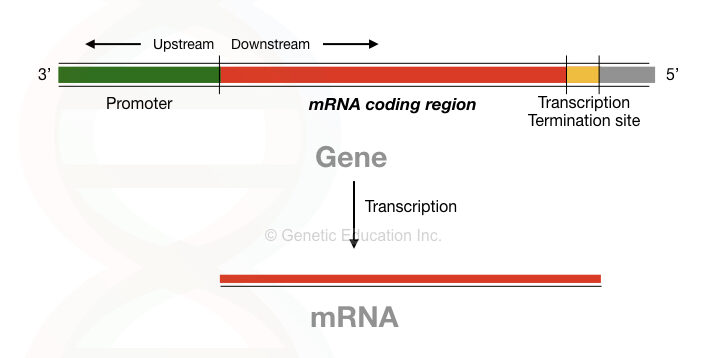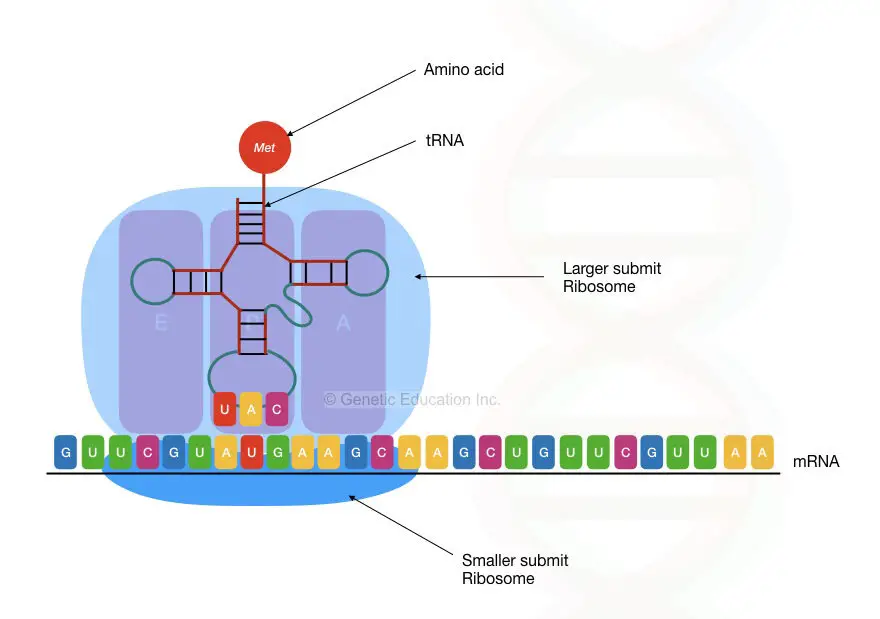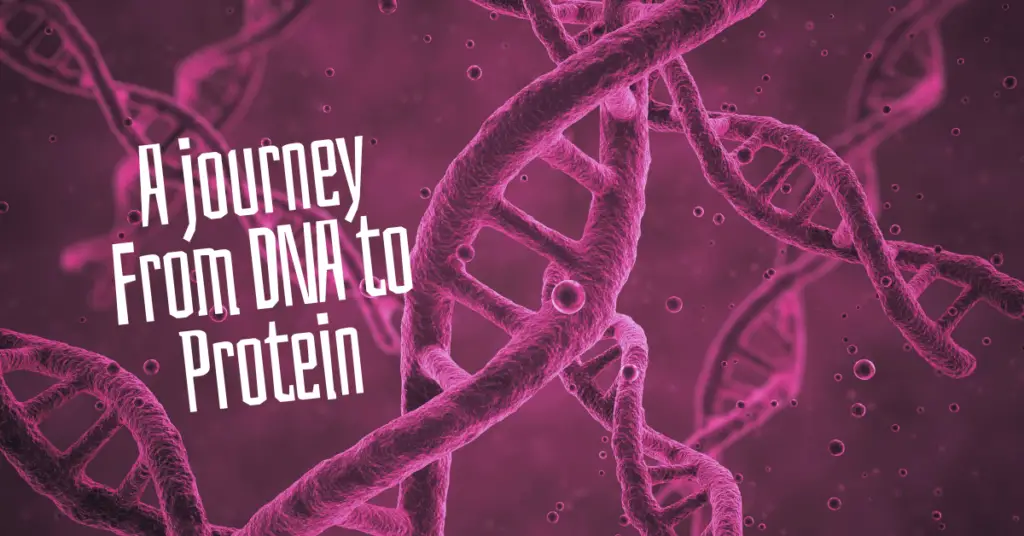“A gene is expressed into a protein via an mRNA intermediate. Learn the complete process of how a gene is expressed in this article.”
Our genome is a memory unit. It stores, transfers and expresses genetic information to perform various regulatory functions. The genome is made up of a polynucleotide chain having the basic unit, a nitrogenous base (A, T, G and C).
A single bit of an organism’s information is encoded in this chain. Genes express to synthesize proteins while non-coding DNA regulates the expression process. Various mechanisms regulate the gene expression process.
The genome executes all three functions by encoding and decoding the information into/from the DNA. It encodes the information through replication, while decoded through transcription and translation into a protein unit.
A journey from DNA to protein synthesis is referred to as gene expression. In this article, we will decode all steps and processes of how a gene is expressed.
Stay tuned.
Related article: What is Epigenetics and How Does It Work?
Key Topics:
How a gene is expressed?
A gene’s expression process comprises two steps with a pre and post-processing step.
Step 1: A gene transcribes into the mRNA (messenger RNA).
Step 2: The mRNA converts into the protein.

The pre-step is the replication in which the gene or DNA is copied, doubled and distributed to new cells and thereby inherited into generations. In the post-step known as the post-transcriptional modification, the protein is modified as per the requirement.
mRNA synthesis by Transcription:
In the journey from a gene to a protein, the first step is mRNA synthesis. Messenger RNA is synthesized from a gene. As the name suggests, it carries a complete message to form a correct protein.
We know this process as transcription. It is catalyzed by the RNA polymerase enzyme. It synthesizes a single-stranded mRNA from the gene. mRNA is popularly known as a “transcript.”
Thus, mRNA is, we can say, a readable form of the RNA that consists of a message to encode the protein. It’s a single-stranded nucleic acid form just like our DNA. But instead of Thymine in DNA, it consists of Uracil.
This, and other function and structural differences make DNA different from RNA. Interestingly, a single transcript means a single mRNA while the entire set of all the cellular mRNA is referred to as transcriptomic.
A gene is made up of introns and exons, a non-coding part and coding sequences, respectively. Other than that, a promoter and regulators are also there for transcriptional activity.
Before transcribing into the mRNA, all the non-coding/introns are removed from the sequence, and all the exons (coding sequences) come together and form the mRNA. By the way, the RNA polymerase II first forms a pre-mRNA, a kind of “working copy” we can consider.
It proofreads and converts into mature mRNA before leaving the nucleus. Note that transcription and translation both are simultaneous processes but occur at different locations (in eukaryotes). Transcription in the nucleus while translation in the cytoplasm.
A gene’s information is successfully encoded into the readable mRNA form. Now, it’s ready to be expressed. It comes out from the nucleus via nuclear pores and starts its exploration towards the ribosome.
Noteworthy, If any error could occur in the encoding process, a correct and functional protein will not be produced. The message should be encoded and decoded correctly.

mRNA to protein By Translation:
The mRNA should have these unique properties before participating in the translation process- poly-A tail and 3’ and 5’ untranslated regions. The untranslated regions are the recognition sites for enzymes to bind during the translation process.
Put simply, translation is a process for synthesizing a protein. At a molecular level, mRNA nucleotides are read as a triplet codon (known as a Genetic Code) by the ribosome, converted into an amino acid one by one.
Finally, all the amino acids in a series form the correct polypeptide chain and a protein. Here, different triplet codons synthesize amino acids. However, more than one type of codon also exists for a single type of amino acid.
UTRs- Untranslated regions, one before the start codon and the second after the stop codon are located on the mRNA. The event of gene expression is initiated when the ribosome recognizes the first start codon.
Interestingly, the Kozak box Sequence present in the UTR serves as a binding site for ribosomal proteins. In addition, the eukaryotic UTRs are longer than the prokaryotic UTRs.
| Feature | Prokaryotic mRNA | Eukaryotic mRNA |
| Presence of Introns | Generally absent | Often present |
| Presence of Exons | Typically continuous | Can be discontinuous due to introns |
| Ribosome Binding Site | Shine-Dalgarno sequence | 5′ Cap |
| Polyadenylation | Usually not polyadenylated | Polyadenylated at 3′ end |
| mRNA Processing | Little to no mRNA processing | Extensive mRNA processing, including capping, splicing, and polyadenylation |
| Location of Transcription | Cytoplasm (simultaneous transcription & translation) | Nucleus (transcription precedes translation) |
We will not extensively explain the process here, rather we will discuss just a few important points, events and steps. The complex phase of gene expression is the recognition and processing of mRNA at the ribosomal site. So many events occur here.
First, in eukaryotes two ribosomal subunits 50S and 30S participate in the translation. The binding of mRNA with the larger 50S subunit initiates the process. Immediately after, the 30S subunit binds with the complex and progresses the process further.
The single-stranded mRNA travels through the amino acid site, polypeptide site and exit site from the larger subunit during the translation. Various ribosomal proteins as well as tRNA and rRNA also participate in the process.
A series of important events occurs like this.
- Binding of mRNA to the 50S and 30S subunit.
- Binding of initiator factors- IF1, IF2 and IF3.
- tRNA starts the initiation step.
- To this pre-initiation complex, the methionine-containing tRNA binds to the mRNA at the start codon (AUG).
- One end of the tRNA reads the triplet codon, another end adds the amino acid one by one.
- The process ends when the tRNA encounters any one of the three terminator codons.
- In the final step, the release factor helps detach the newly formed amino acid from the ribosome site.

Our amino acid chain is ready!
But wait, is it our final protein? Can we tell that the gene is expressed? Well, actually not yet!
A protein is a complex macromolecule made up of many amino acid chains and structural organization. This way various amino acid chains are formed, combined during the post-processing stage, and fold into primary, secondary and tertiary structures to form a mature protein.
Proteins such as enzymes, hormones, immunoglobulins, cell receptors, chaperons, hair, bone and membrane proteins are formed from their respective genes.
Once a fully matured protein is formed and starts doing its function, we then can say that the gene is expressed and the DNA to protein journey ends! However, at a molecular level, the process contains many sub-steps, molecular and other elements that make the entire process complex and confusing.
Wrapping up:
This is a summary or a comprehensive explanation of the two important processes transcription and translation that collectively end in gene expression. Put simply, the synthesis of a mature and functional protein from a gene is known as gene expression.
This mechanism is tightly regulated and can be affected by various intrinsic and extrinsic factors. Gene expression can be studied in the epigenetics subdiscipline. I hope you like this article.
Do share it and subscribe to our blog.
Resources:
Alberts B, Johnson A, Lewis J, et al. Molecular Biology of the Cell. 4th edition. New York: Garland Science; 2002. Chapter 6, How Cells Read the Genome: From DNA to Protein. Available from: https://www.ncbi.nlm.nih.gov/books/NBK21050/.
- Article Published On: 11/12/2019
- Article Updated On: 8/5/2024



